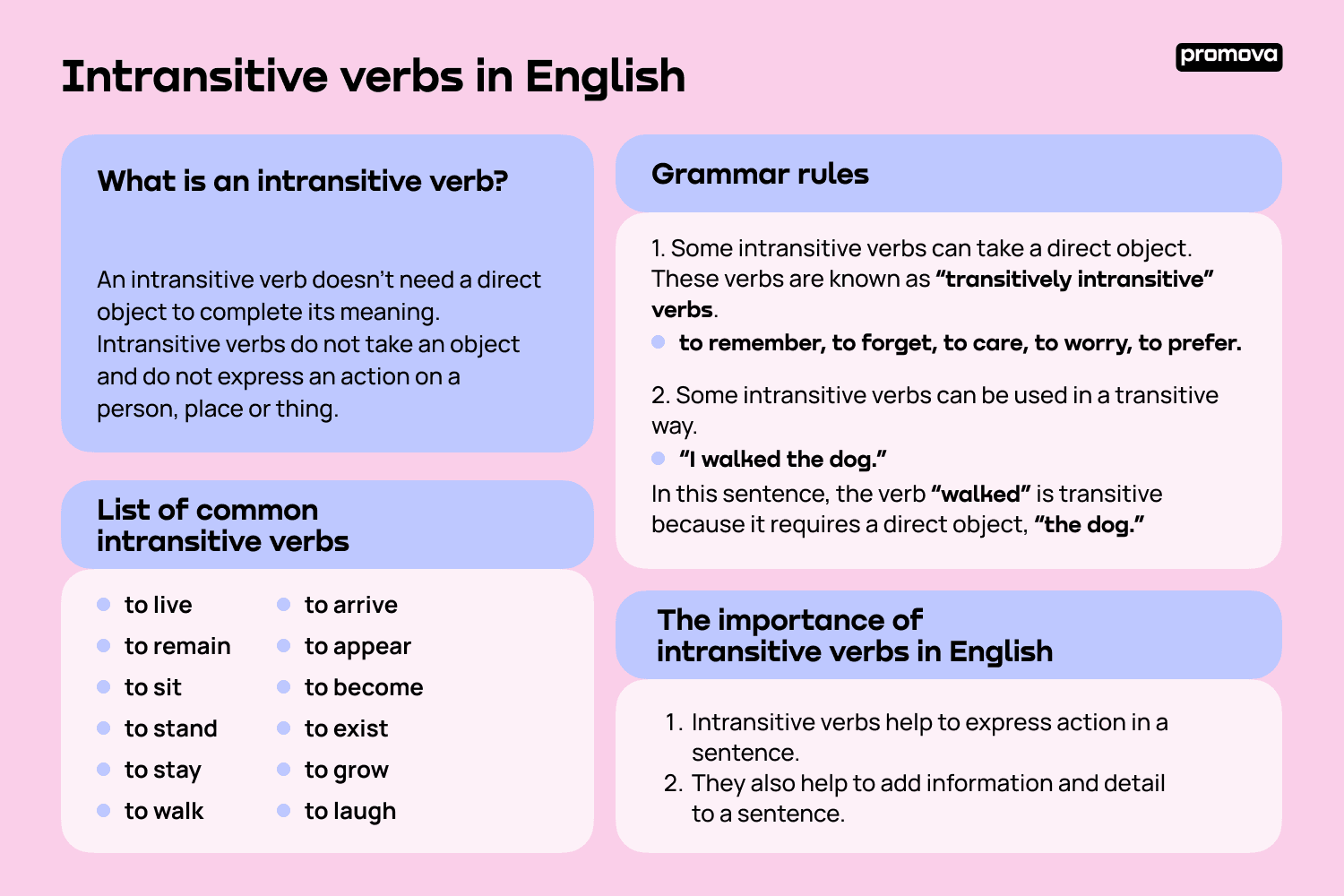Verbs are an essential part of any sentence, as they express action or state of being. There are two main types of verbs: transitive and intransitive. Understanding the difference between these two types of verbs is crucial for constructing clear and effective sentences.
Transitive and intransitive verbs differ in their need for an object to complete their meaning. Let’s delve deeper into the distinction between these two types of verbs.
Transitive and Intransitive Verbs Difference
Transitive verbs are action verbs that require a direct object to complete their meaning. In other words, they act upon someone or something. For example, in the sentence “She ate the apple,” the verb “ate” is transitive, and “the apple” is the direct object that receives the action of eating.
In contrast, intransitive verbs do not require a direct object to complete their meaning. They express action that does not transfer to an object. For example, in the sentence “She sleeps,” the verb “sleeps” is intransitive because it does not require an object to make sense.
It is important to note that some verbs can be both transitive and intransitive, depending on how they are used in a sentence. For example, the verb “run” can be transitive when followed by a direct object (“She runs a marathon”) or intransitive when used without a direct object (“She runs every morning”).
When identifying whether a verb is transitive or intransitive, consider whether it requires an object to complete its meaning. If it does, it is likely a transitive verb. If it does not, it is likely an intransitive verb.
Understanding the difference between transitive and intransitive verbs is essential for building grammatically correct sentences. By recognizing the role of objects in relation to verbs, you can ensure clarity and precision in your writing.
In conclusion, transitive verbs require a direct object to complete their meaning, while intransitive verbs do not. By grasping this distinction, you can enhance your ability to construct coherent and effective sentences.
